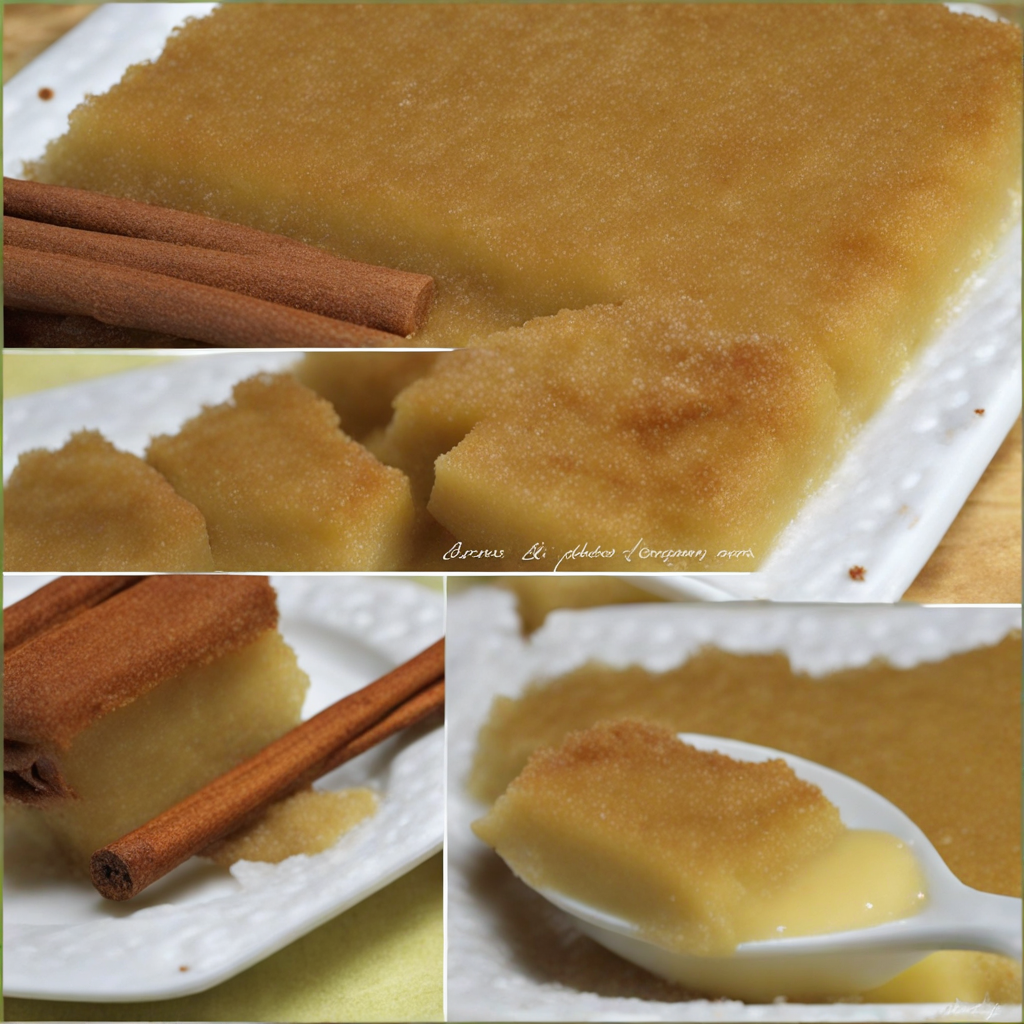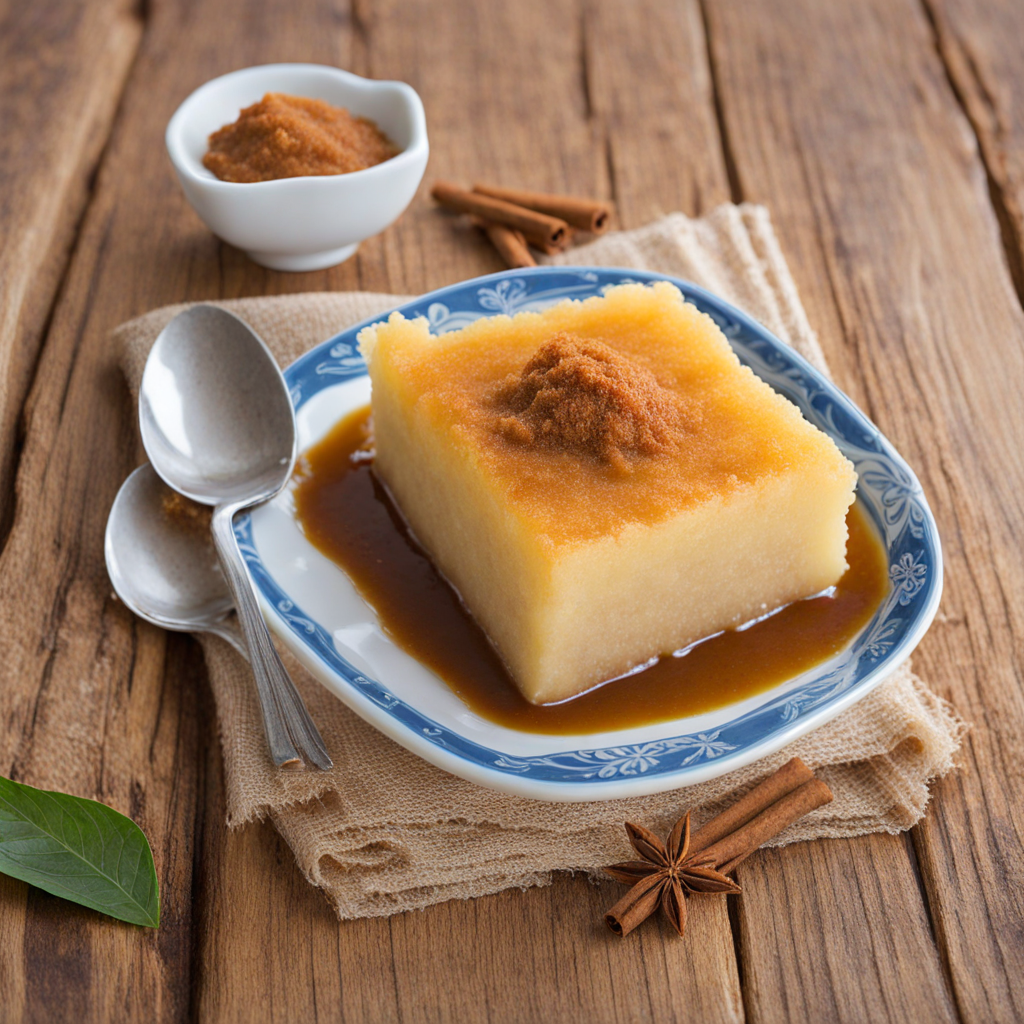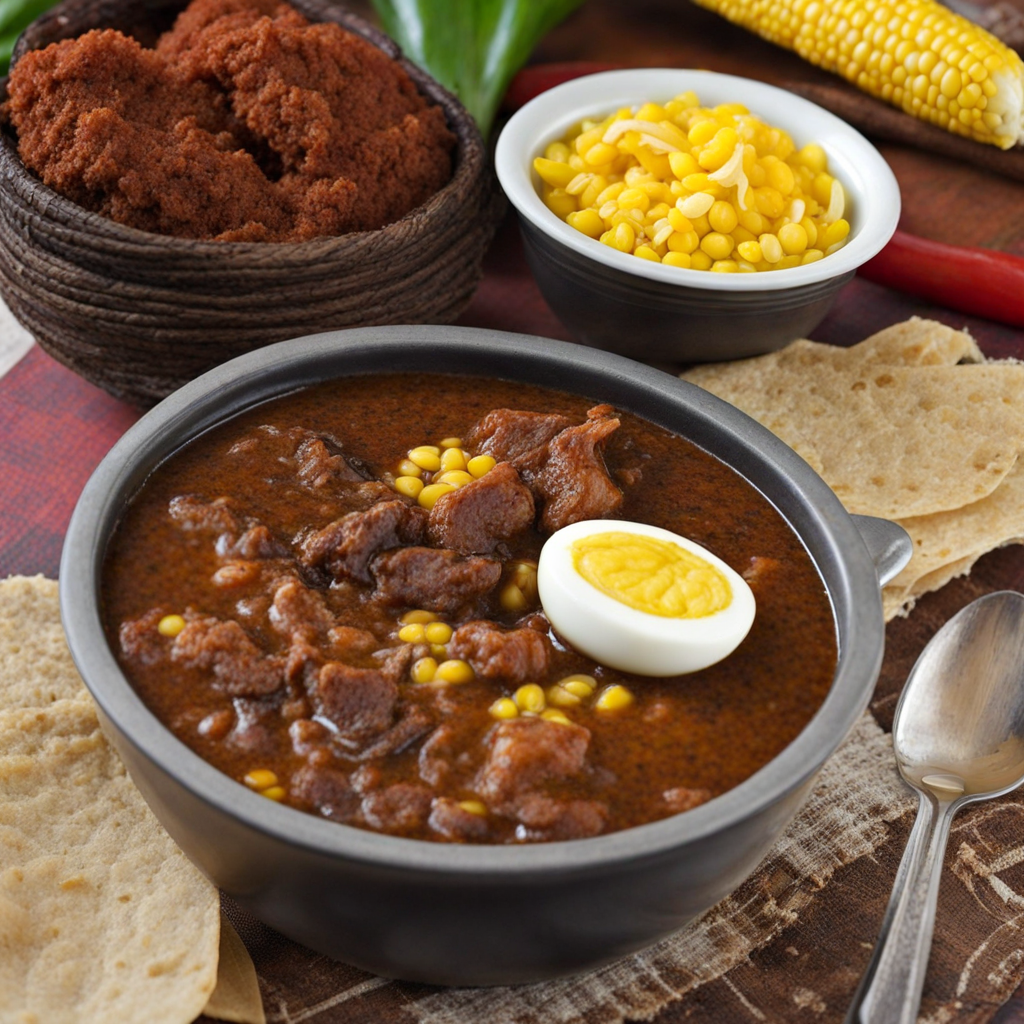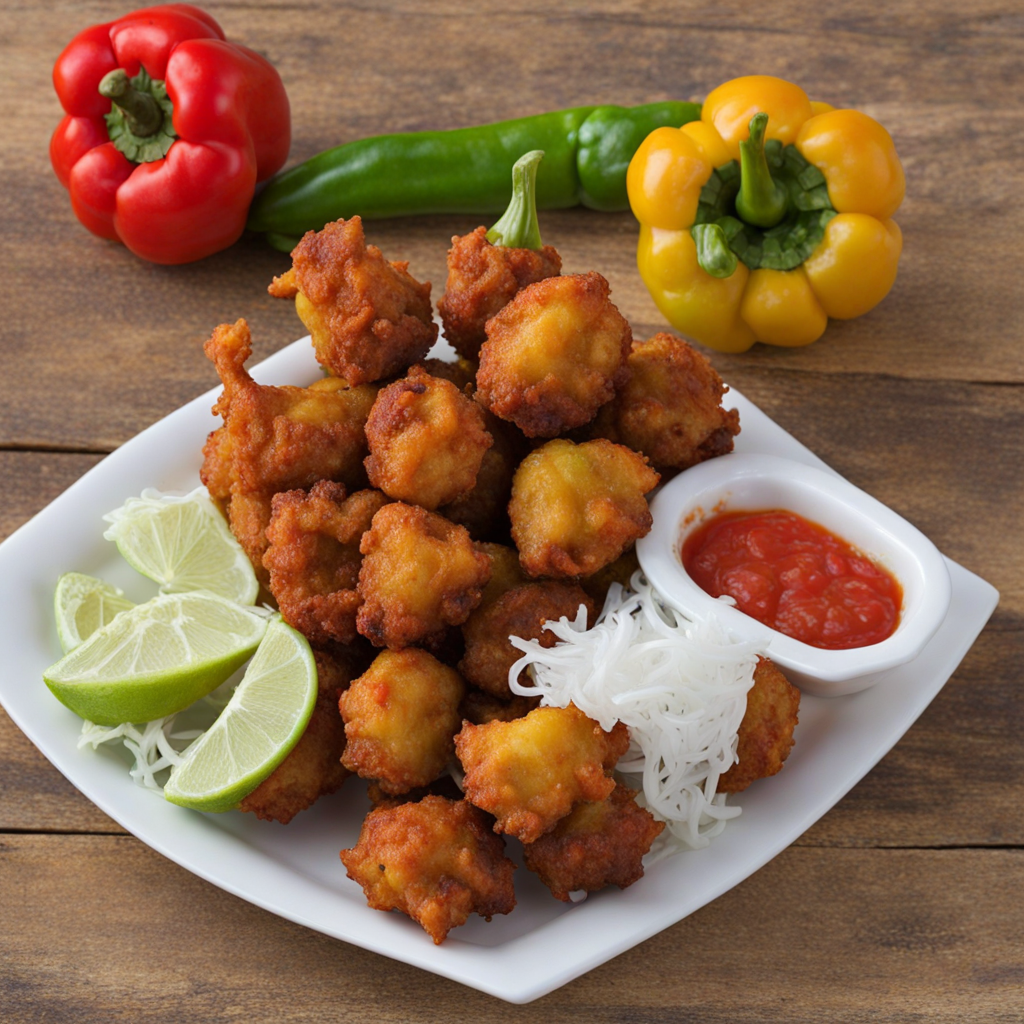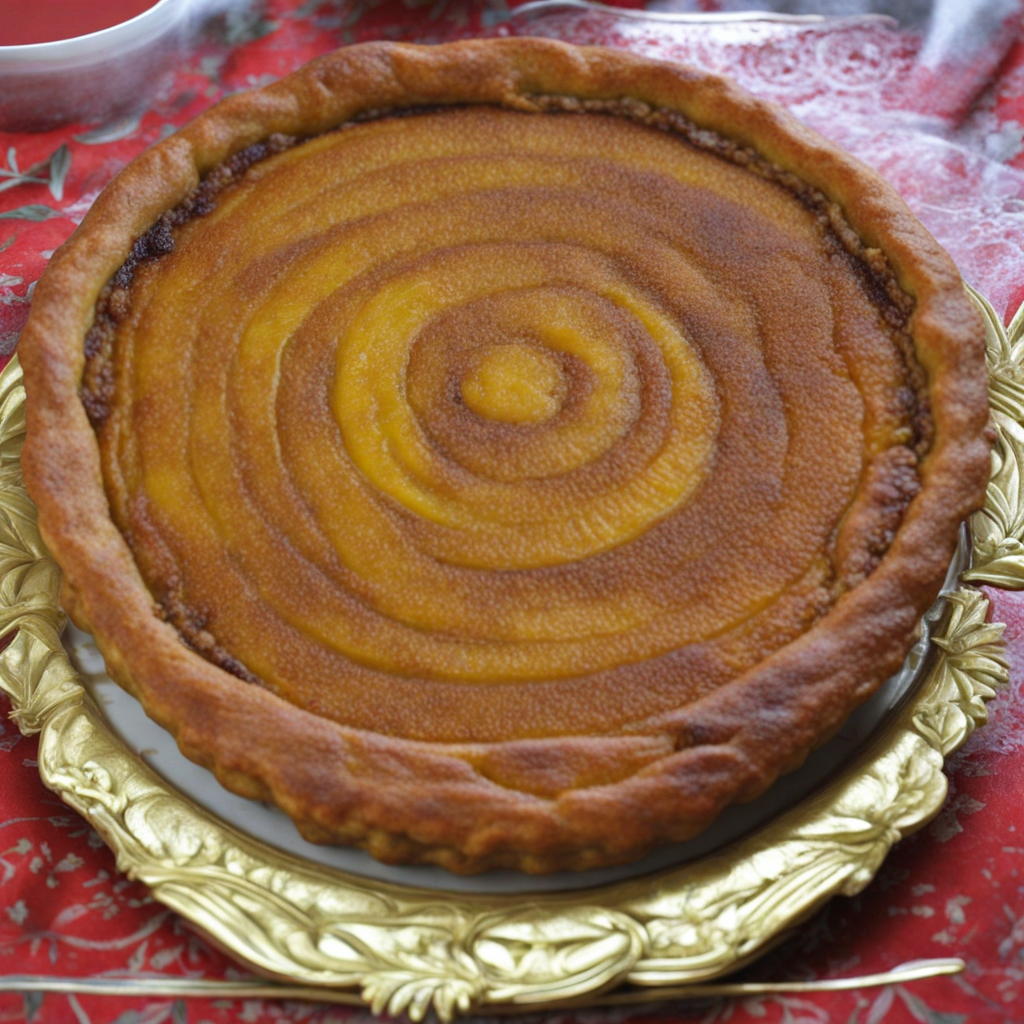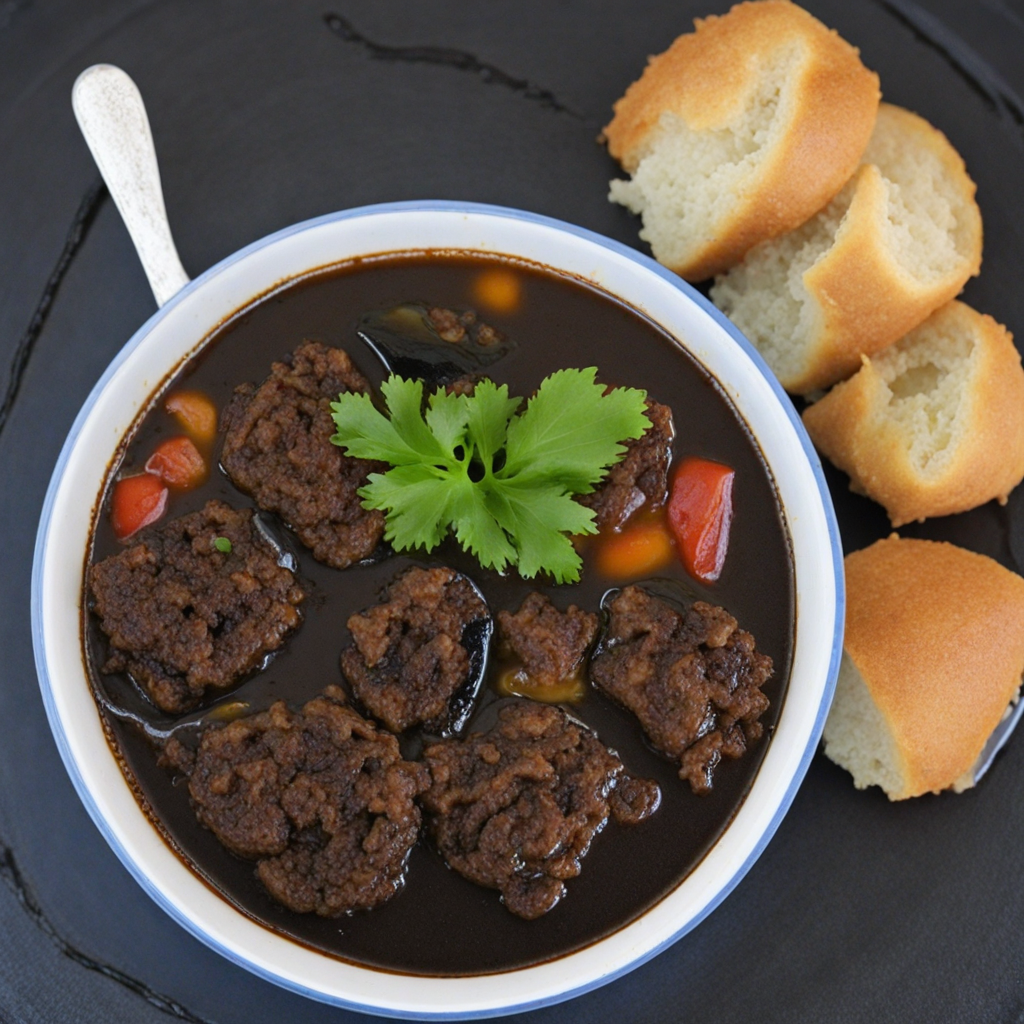Cassava Pudding
Cassava Pudding is a beloved traditional dessert from Belize, showcasing the rich culinary heritage of the region. Made primarily from grated cassava, a starchy root vegetable, this pudding offers a unique texture that is both chewy and slightly dense. The cassava is mixed with coconut milk, sugar, and a hint of vanilla, creating a sweet and creamy base that perfectly complements the natural earthiness of the cassava. It's often enhanced with spices like cinnamon and nutmeg, which provide warm, aromatic notes that elevate the overall flavor profile. This delightful pudding is typically baked until it forms a golden crust on top, while the inside remains moist and luscious. The contrast between the crispy exterior and the tender, custard-like interior makes each bite an experience to savor. Some variations may include raisins or nuts, adding an extra layer of texture and flavor. Served warm or at room temperature, Cassava Pudding can be enjoyed as a comforting dessert or a sweet snack at any time of the day. Cassava Pudding not only reflects the local ingredients and culinary traditions of Belize but also embodies the communal spirit of sharing food. It is often prepared for family gatherings, celebrations, and festive occasions, bringing people together around the table. This dish is a testament to the creativity and resourcefulness of Belizean cooks, transforming humble ingredients into a delightful treat that is sure to capture the hearts—and palates—of those who try it.
How It Became This Dish
The History of Cassava Pudding in Belize Cassava pudding, a beloved dish in Belize, embodies the rich tapestry of cultural influences that have shaped the nation’s culinary landscape. This traditional treat, made from the starchy root of the cassava plant (Manihot esculenta), is a testament to the fusion of indigenous practices, colonial histories, and the vibrant melting pot of ethnic communities that populate Belize today. #### Origins of Cassava The cassava plant is native to South America, where it has been cultivated for thousands of years. Its roots are a vital source of carbohydrates and are particularly valued for their resilience in poor soil conditions. Indigenous peoples of the Amazon basin were the first to cultivate cassava, and its cultivation spread throughout the Caribbean and Central America, including Belize, as a staple crop. The Maya, who have inhabited Belize for millennia, were among the first to adopt cassava into their diets. They developed techniques for processing the root, which is toxic in its raw state due to the presence of cyanogenic glycosides. The traditional method involves peeling, grating, and squeezing the cassava to extract the toxic juices before cooking it. This labor-intensive process laid the groundwork for various cassava-based dishes, including the beloved cassava pudding. #### Cultural Significance In Belize, cassava pudding holds a special place in the culinary heritage, symbolizing home and community. It is often prepared for festive occasions, family gatherings, and religious celebrations, serving as a bridge between generations. The dish is particularly popular among the Creole, Garifuna, and Mestizo communities, each adding their own twist to the traditional recipe. For the Garifuna, who descended from a mix of West African, Carib, and Arawak peoples, cassava pudding is often served during cultural celebrations and is an integral part of their identity. The pudding itself is a reflection of Belize's diverse cultural fabric, showcasing the blending of ingredients and techniques. Typically, it is a combination of grated cassava, coconut milk, sugar, and spices like cinnamon and nutmeg. Some variations might include dried fruits, such as raisins or prunes, and even a touch of vanilla. This combination of ingredients not only highlights the agricultural bounty of the region but also demonstrates the influences of African, Caribbean, and European culinary traditions. #### Development Over Time Historically, the evolution of cassava pudding can be traced alongside the transformations in Belize's society. The arrival of the British in the 17th century brought about significant changes. The British colonial presence introduced new cooking methods and ingredients, which melded with existing indigenous practices. As the country experienced waves of migration, particularly from the Caribbean, the dish evolved further. In the 19th century, the introduction of sugar plantations in Belize changed the agricultural landscape, making sugar more accessible and affordable. This availability allowed for sweeter versions of cassava pudding, enhancing its appeal during special occasions. The incorporation of coconut milk, brought by the increasing influence of Caribbean flavors, also added a creamy richness that became characteristic of the dish. As Belize gained independence in 1981, there was a resurgence of interest in traditional foods as a means of cultural expression. Cassava pudding was embraced as a national dish, celebrated not only for its taste but for its historical significance. Cookbooks began to document traditional recipes, and local chefs started to innovate, experimenting with modern twists while honoring the foundational techniques. Today, cassava pudding is enjoyed by people from all walks of life in Belize. It is frequently showcased at local festivals and markets, where vendors sell slices of the pudding, often warm and fresh out of the oven. The dish has also found its way into international cuisine, with Belizean restaurants abroad introducing it to a broader audience. Social media has played a significant role in this cultural exchange, allowing foodies and culinary enthusiasts to share recipes and stories associated with cassava pudding, thus keeping the tradition alive. #### Modern Variations In contemporary Belizean cuisine, cassava pudding continues to evolve. While traditional recipes remain popular, modern interpretations have emerged. Some cooks now infuse exotic flavors like chocolate or incorporate local fruits, such as mango or papaya, into their puddings. Gluten-free and vegan adaptations have also surfaced, reflecting a growing awareness of dietary restrictions and preferences among consumers. Moreover, the use of technology has made cassava pudding more accessible. Many Belizean families now share their recipes online, contributing to a community of food lovers who cherish this dish. Cooking shows and YouTube channels dedicated to Belizean cuisine often feature cassava pudding, demonstrating its preparation and highlighting its significance within the culture. #### Conclusion Cassava pudding is more than just a dessert in Belize; it is a celebration of history, culture, and community. From its indigenous roots to its colonial adaptations and modern interpretations, this dish embodies the resilience and creativity of the Belizean people. Each bite of cassava pudding tells a story—a story of survival, adaptation, and a deep connection to the land and its rich cultural heritage. As Belize continues to evolve as a nation, cassava pudding will undoubtedly remain a cherished symbol of its past, present, and future, inviting both locals and visitors alike to savor the flavors of this remarkable culinary journey. Whether enjoyed at a family gathering, a cultural festival, or a casual meal, cassava pudding serves as a delicious reminder of what it means to be Belizean, melding the old with the new, and connecting generations through a shared love of food.
You may like
Discover local flavors from Belize


